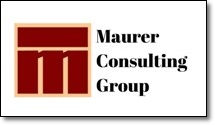‘Designing Strategies’ newsletter
January – February 2006 Volume 3 – Issue 9
There is an ongoing difference of opinions on the key component of business success: customers or employees. Some say it’s all about the customers. From my viewpoint, it is that ‘chicken or the egg’ theory: Which came first? I have to give employees the nod. An employee is the first contact  a customer has with your product or service. The importance of excellent employees to a successful business is obvious.
a customer has with your product or service. The importance of excellent employees to a successful business is obvious.
Their first experience with your company may be the receptionist answering the telephone or greeting them as they enter your place of business. It could be a delivery person, or a maintenance person shoveling snow from your front entrance. Generally, none of these are high paying jobs, but they are certainly important to your firm’s success.
Imagine a day without any one of those people doing their best to represent you. The phone rings repeatedly with no one who picks it up with a quick, friendly answer. Your customer relations specialist doesn’t respond in an interested, polite manner. Products stack up on the loading dock, waiting to be delivered by a skillful, friendly representative of your firm. Customers arrive at your door, irked because they have to climb through snowdrifts to get to your door. Odds are, those customers will not be in the most receptive mood to do business once they have found you.
Finding and hiring good people is only the beginning of the process. Once you get them, how will you keep them in this highly competitive job market? Is yours a good place to work? Do you pay a fair wage for their contributions? Do you show them basic respect as a part of your team? Have you assigned a training budget for your workers? Do you let them know that no matter how low their job is on the corporate totem pole, that they are important to the success of your business?
You should have already established a corporate culture where employees can easily recognize their importance to the success of your firm. If you haven’t, maybe that should be your number one resolution for 2006. Identify your ‘A’ level people and determine what you can do to keep them. Determine who your ‘B’ level people are and how you can move them up to level ‘A’. Anyone who is ‘C’ or below, get rid of them. Replace weak employees with ‘A’ and ‘B’ workers who will add to your company’s success. Who wants mediocre staff when they can have excellent employees instead?
Training Helps Develop Excellent Employees for Your Firm
Training your people is one way to provide them with tools they need to succeed and be productive. Empowering them to do their jobs the best way they see fit is another. Recognizing their achievements goes a long way to making them feel their efforts have been noticed and appreciated. What, if anything, are you doing to support the people who support your business?
 If you have no training program in place, investigate ways to get one going. Good employees need good training to nurture the best they have to offer. Smaller firms may not be able to afford in-house training staff. Look outside for development programs available to teach your people leadership, team work, and project management. Provide training for those with management potential to help them succeed in their move up the ladder.
If you have no training program in place, investigate ways to get one going. Good employees need good training to nurture the best they have to offer. Smaller firms may not be able to afford in-house training staff. Look outside for development programs available to teach your people leadership, team work, and project management. Provide training for those with management potential to help them succeed in their move up the ladder.
Recognize and Reward Your Excellent Employees
Find ways to reward innovation and excellence. Rewards need not be expensive. It is the recognition that counts. Reserve a parking space near the front door for the ‘Employee of the Month’. Feature an employee in the company newsletter where other employees and customers will see it. These kinds of rewards cost little but go a long way in making an employee feel valued. Gift cards or gift certificates to local restaurants, and tickets to concerts or sporting events are inexpensive ways to tell an employee that you’ve noticed their contributions and appreciate their efforts. Identifying an excellent employee once a month is not unreasonable or cost prohibitive.
Establish a culture that recognizes excellent employees as a critical part of your company’s success. You can’t succeed without their important contributions. Make it a vital part of your 2006 strategic plan. The effort will more than pay for itself in years to come.

The latest 100 Best Companies to Work For has just been published by Fortune magazine. In scanning
the list for those who fall within “Designing Strategies” readership, I was pleased to find a few that I recognized. Interestingly, companies weren’t recognized because they have the highest pay scale, or best
benefits package.
 Milliken holds 38th place on the list, with a notation that management cares about their employees. Sherwin Williams placed 61st . They promote 90% of management positions from within, provide training, and hire a significant number of new college recruits every year. Retailer IKEA, who provides an average of 40 hours a year in training for its employees, ranked 96th on the list.
Milliken holds 38th place on the list, with a notation that management cares about their employees. Sherwin Williams placed 61st . They promote 90% of management positions from within, provide training, and hire a significant number of new college recruits every year. Retailer IKEA, who provides an average of 40 hours a year in training for its employees, ranked 96th on the list.
In the construction arena, Pella, manufacturer of doors and windows, ranks 44th . Unlike firms forcing older, experienced workers out to make way for younger, cheaper replacements, reducing pension and health care costs, Pella honors loyalty and dedication. Employees who have been with the firm for 25 years are recognized with a personalized brick being placed in Pella Plaza at the Iowa State Fairgrounds. PCL Construction in Denver, in 65 th place, has an employee ownership program. The program limits any one employee from owning more than 8% of the company’s shares, but is still a strong motivator. David Weekly Homes, rewards achievement by taking all employees on a celebratory vacation.






